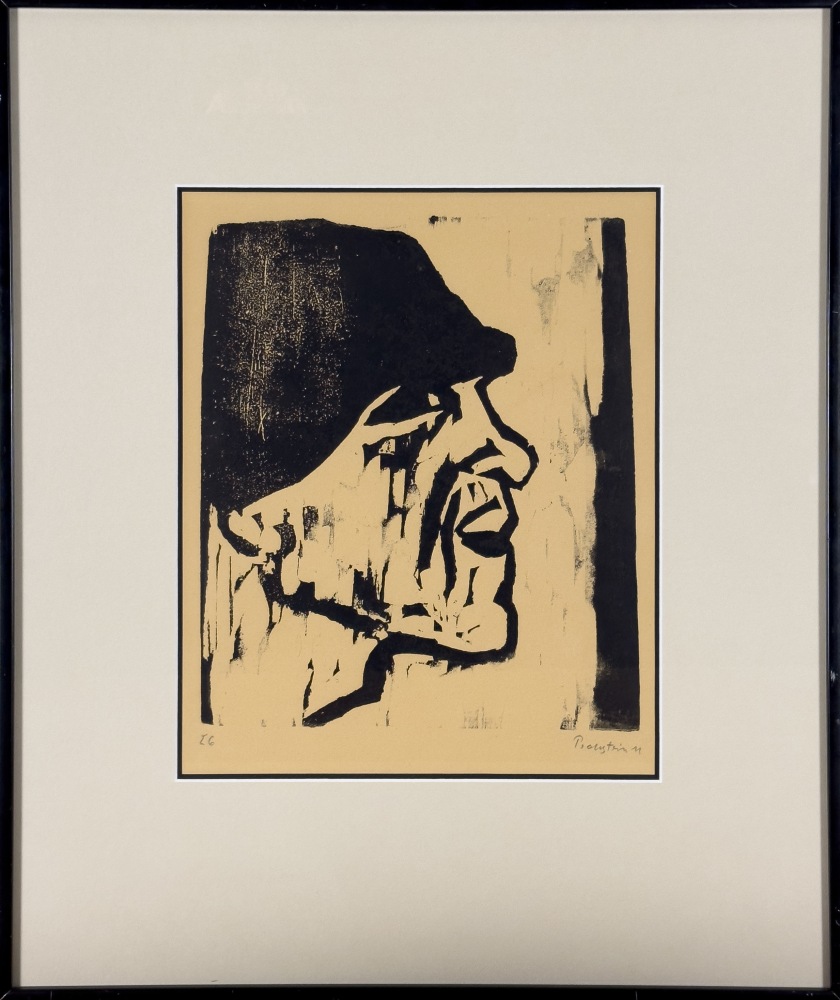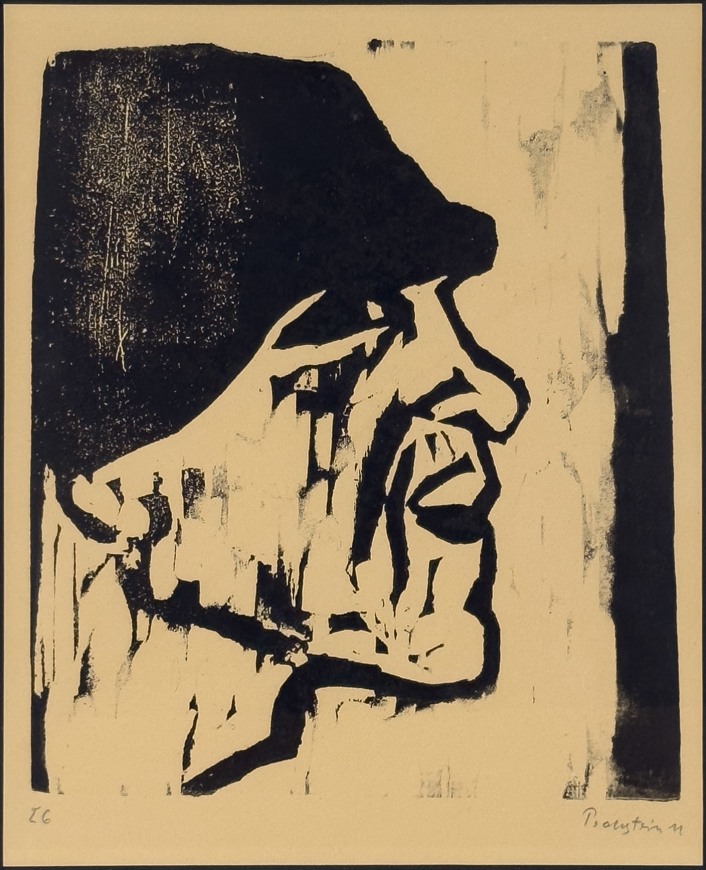29 x 23.5 cm
Inscriptions
numbered, ‘26’ (lower left); signed and dated, ‘Pechstein 11’ (lower right)Provenance
Private collection, Town of Mount Royal, Quebec
Exhibitions
London, British Museum, The Print in Germany 1880–1933: the age of expressionism: prints from the Department of Prints and Drawings in the British Museum, 20 September 1984–20 January 1985, cat. no. 104.
Liverpool, Tate Gallery, German Woodcuts and Carvings, November 1990-January 1991.
New York, The Museum of Modern Art, About Face: Selections from the Department of Prints and Illustrated Books, March 22 - June 5, 2001.
Literature
Paul Fechter, Das graphische Werk Max Pechsteins (Berlin: Fritz Gurlitt Verlag, 1921), 79.
Alexander Dückers, “ Portfolios,” in German Expressionist Prints and Drawings: Essays, Volume 1, edited by The Robert Gore Rifkind Center for German Expressionist Studies (Los Angeles, CA: Los Angeles County Museum of Art, 1989), 76 [reproduced]. cat. no. 102.
Bruce Davis and The Robert Gore Rifkind Center for German Expressionist Studies, German Expressionist Prints and Drawings: Catalogue of the Collection, Volume 2 (Los Angeles, CA: Los Angeles County Museum of Art, 1989), 595 [reproduced], cat. no. 2219.
In a text about this work prepared for the British Museum’s 1984 “The Print in Germany 1880-1933: The Age of Expressionism” exhibition, curators Frances Carey and Antony Griffiths noted that:
“This woodcut is one of a set of eleven of heads of fishermen (Fechter 73-83) made in 1911. Pechstein also cut another set of eleven woodcuts of bathers in this year. All must have been made during the summer months he spent on Nidden on the Kurische sand-bar in East Prussia.
The set was published in an edition of twenty on Japan paper. This impression, however, comes from another edition, made only of this block, for the seventh Brücke portfolio of 1912. This was devoted to the work of Pechstein [...]. Although the entire edition of the portfolio was printed, it was apparently never distributed because of Pechstein's expulsion from the Brücke in the summer of 1912.
This print is an excellent example of the mature Brücke woodcut; the hewn character of the block enhances the man's rugged features. In his essay about his own printmaking of 1921, Pechstein commented on the development of his woodcuts: "In 1905 in Dresden I made my first woodcut in the manner of a wood-engraving, cutting out the drawing with a burin on hard box-wood. Then I turned to the gouge and wood cut along the grain (alder, lime or poplar) which allowed an easier cutting; the preliminary design was now only sketched out on the block. Finally I took to using a short Cobbler's knife and cut freely into the wood without any preparatory drawing, just as if drawing on paper with a pencil ... My basic principle was and remains that the work must begin with the same tools as those with which it is completed, without making any preliminary drawing on the wood, stone or copper plate. The artistic intention is clarified by earlier sketches and drawings, and so prepared in the head, is brought to realization with the appropriate tools."
Source: Retrieved from https://www.britishmuseum.org/collection/object/P_1984-0609-9
__________
The German Expressionist painter Max Pechstein first trained as a decorator’s apprentice in Zwickau and moved to Dresden in 1900 to study at the Kunstgewerbeschule. In 1906 he met Erich Heckel and through him joined Die Brücke (The Bridge) along with Ernst Ludwig Kirchner and Karl Schmidt- Rottluff. During the following years he shared their revolutionary ideas on art and their interest in primitive art and travelled with them to different parts of Germany to paint outdoors. In 1907 he was awarded a scholarship to travel to Italy and subsequently visited Paris, where he met the Fauve group and persuaded Kees van Dongen to collaborate with Die Brücke. On returning to Germany, he took up residence in Berlin, to which the rest of the members of the group moved three years later. In Berlin Pechstein had the opportunity to secure more commissions, which materialised in the decoration of numerous private residences and in the design of stained-glass windows. During this time his work began to be publicly acclaimed, ahead of the rest of the group.
Throughout his life he combined intense public activity — such as the founding of the Neue Sezession after the Berlin Secession rejected some of his paintings and taking part in the Novembergruppe — with temporary retreats to places isolated from civilisation, such as Nidden and Leba in the Baltic Sea and Palau in the South Seas.
When the National Socialist party arrived in power in 1933, Pechstein was forced to abandon painting and was dismissed from his teaching post at the Preussische Akademie der Künste, where he had worked since 1922. He was also included by the Nazi regime in the Munich Entartete Kunst (Degenerate Art) exhibition and his work was removed from the state museums. After the Second World War ended, Pechstein was reinstated to his post and received many recognitions for his work. He died in West Berlin in 1955.
Source: https://www.museothyssen.org/en/collection/artists/pechstein-max













